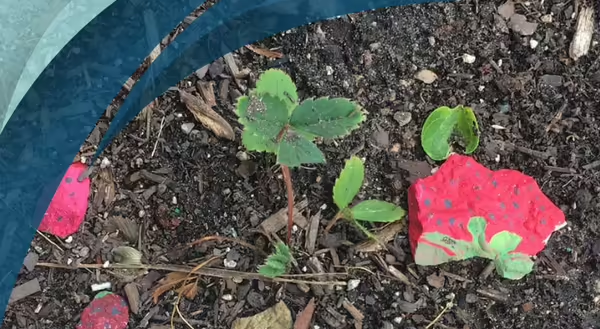
Summer is the prime time to enjoy the sweet treat of strawberries (Fragaria species). While we’re approaching the Fourth of July, believe it or not, there is still time now to plant them for future enjoyment.
Plan your patch
June-bearing strawberries provide one large crop of bigger berries and everbearing strawberries produce smaller berries throughout the growing season. There also are novelty types of strawberries that range in flavor or color – such as purple, yellow, white.
While the June-bearing crop is almost done for the summer, the everbearing crops are still producing. Everbearing strawberries have produced one flush or crop of strawberries this year. If you plant them now, you will need to sacrifice the flush of flowers after planting to establish the plants. There will be time for another flush before frost. On an average year, everbearing will produce two to three good flushes of strawberries throughout the growing season.
Prepare your bed
Before you plant, test your soil and amend with compost or organic matter. The addition of organic matter helps add nutrients and helps with water retention. When planting strawberries, start with a weed-free, well-drained site in full sun. Remove the first flush of flowers to help this perennial plant establish a good root system. For June-bearing strawberries, that means no strawberries until next year, but it is worth the wait. Everbearing strawberries will still have berries later this season. Be ready to mulch with 4 to 6 inches of weed-free straw. Straw will have multiple benefits for your strawberries: it will suppress weed growth, retain moisture, and hold heat protecting the berries’ crown during the winter.
It is recommended that everbearing plants are planted in a hill system. In the hill system, plant them one foot apart within the row and cut off runners as they appear, which allows all of the energy to remain in the mother plant. If allowed to produce runners, flowering and fruiting are halted and energy will not stay in the crown of the plant, compromising winter hardiness. Everbearing strawberries have the ability to produce berries until frost. Everbearing berries are smaller in size than June-bearing, but you get more berries throughout the year than just one large harvest.
Protect your fruit
One way to protect your strawberries during development and ripening is to paint rocks to look like strawberries and place them in your patch. This is a natural deterrent for birds. They will try to eat the rocks instead of your developing strawberries. Painting strawberry rocks is a fun family activity that is inexpensive and creative. Flat rocks or those that resemble the shape of a strawberry work best. Utilize craft paint for the green leaves, red flesh, and yellow for the achenes (which are usually thought of as seeds). If you have slugs on your strawberries, use non-alcoholic beer traps. Non-alcoholic beer in traps has shown to be the most effective for slugs on strawberries.
Contact your local Extension office for assistance with these or other plant-related questions. Many local offices have Master Gardener Help Desks throughout the summer growing season. For more information on growing berries, check out the Small Fruit Crops for the Backyard website. Also, check out the University of Illinois Extension Horticulture YouTube Channel for videos on growing berries and other horticulture topics.